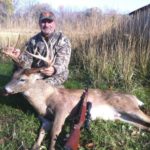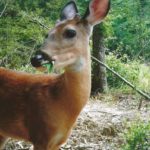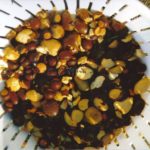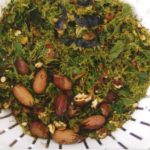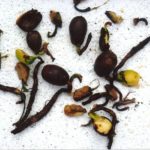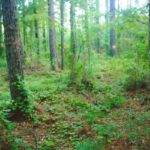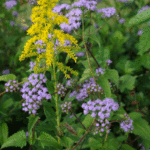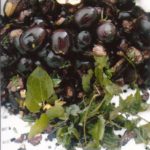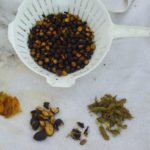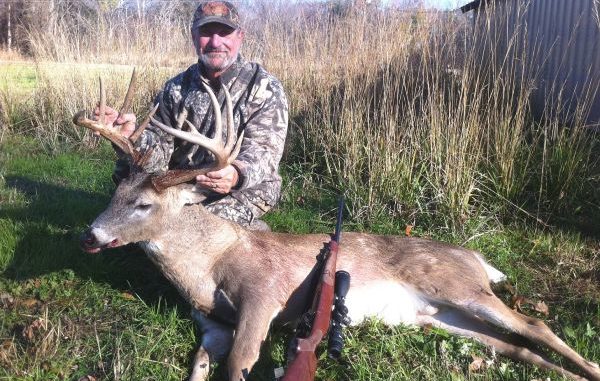
There are around 600 different species of plants that deer eat in Louisiana. Here are some findings that will help you focus on the most-popular deer foods to up your changes of hunting success.
As we all know, the 2011 mast crop was tremendous, but the overall statewide deer harvest was way down from past years.
While many are quick to blame low deer numbers due to drought, coyotes, poor habitat, etc., the plain and simple fact is that deer had an abundant food source available to them — and they did not have to visit the feeders and food plots as most hunters hoped they would and subsequently banked their hunting outings on.
A very mild winter also kept native browse greener than usual, providing the deer with sufficient food.
It has always been my observation that an abundant mast crop will keep deer movement to a minimum, and a mild winter will keep them out of the green patches and foraging on the native plants in the thickets and woods, especially when the hunting pressure increases.
Last season I spent some time examining stomach contents of harvested deer in the pine woods of East Feliciana Parish and in the bottomland hardwood forests and agriculture land in the Upper Morganza Floodway of Pointe Coupee Parish. In light of another potentially good mast crop this season, it would be wise for deer hunters to take a close look at the foods deer were eating in 2011.
It might help in determining the best stand location for this year’s upcoming season.
QDMA’s top 10 plant list
One of the advantages to being a member of the Quality Deer Management Association is that one is privy to information about deer management and deer hunting from across the country. The association has begun publishing an Annual Report of Deer Hunting in North America that is available to the membership.
The association surveyed biologists across the Southeast and developed a list of the 10 important plants deer use as food. The various states submitted their top 10 plants to the association, and from that a list was produced for the Southeast region of the country.
These 10 browse species are:
American beautyberry (French mulberry)
Beggar’s lice (desmodium spp.) — a forb or herbacious plant
Brambles (rubus spp.) — blackberries/dewberries
Grape (vitis spp.) — muscadine
Greenbriar (smilax spp.)
Poison ivy
Pokeweed (poke salad) —a forb or herbaceous plant
Ragweed — a forb or herbaceous plant)
Strawberry bush
The report mentions several other important species that the Southeast biologists submitted, and these included rattan vine, devil’s walking stick, aster and trumpet creeper
These four plants are important browse plants that we have in Louisiana, along with the ones mentioned in the list.
The list contains three separate forbs or herbaceous plants. These are non-woody plants that are seasonal during the year.
Cool-season forbs appear with the arrival of spring and die-back as summer approaches and the days become hot.
There are those summer species that begin to grow as the days become warmer, and are eaten at this time and into the fall.
Many of the perennial species will over-winter as a basal rosette, and will be eaten by deer during the winter months.
Most of these herbaceous plants that deer feed on are in the composite and legume families. The composite family contains plants such as aster, ragweed, goldenrod, wild lettuce and mist flower, while the legume family contains the beans and peas, joint-vetch, bundle-flower and the clovers.
The woody plants on the QDMA list are all important species in the Louisiana deer woods, but certainly there are other species that are high in nutritional value and are regularly browsed.
Scott Durham, the state deer biologist for the Louisiana Department of Wildlife & Fisheries, has been conducting a research study for the past two years that is looking at the nutritional value of many of these species that deer use as food. As you read this story, pay attention to the different plants that deer are eating on the two habitat sites; it is interesting to see not only this difference but the difference in the winter and summer browse plants utilized by deer at these two locations.
Plant specie and their nutritional values can vary from one habitat type to the next. The soil fertility in the Morganza floodway is much greater than that of the piney woods in East Feliciana Parish.
The book Quality Whitetails states that 10 percent or fewer of the plant species on the landscape comprise the bulk of the deer’s diet. These preferred species will often occur on the different habitat types across the state.
Deer will feed on those that provide the most nutrition, unless deer numbers are too high and have over-browsed these preferred species. In this situation deer will eat those plants that have less nutritional value, and this results in poor body growth and antler development.
Habitat that is not properly managed can create similar problems for deer.
For best growth and development, deer need plants that have a good protein content (10 to 16 percent); provide calcium and phosphorus, digestible energy; and contain sodium and other micro nutrients.
The best nutrition comes from new plant growth, which is a product of plant succession. A forest management plan that includes scheduled timber cuts to keep plant succession occurring provides deer with a good plane of nutrition.
Year-round supplemental plantings provide deer with another source of quality forages.
2011 deer stomach investigation
Thirty-one deer stomachs were examined from the pine/hardwood habitat in East Feliciana Parish, and nine stomachs were examined from the bottomland hardwood forest/agriculture land in Pointe Coupee Parish.
See sidebar titled “Upper Morganza Floodway stomach samples” for the results from the Pointe Coupee sampling.
Rubus (blackberry) was the only high-use plant from this habitat that was on the QDMA list. The forest where these deer were harvested from was logged several years ago, and there is a good component of blackberry and dewberry in the understory.
Honeysuckle, which is one of the plants on the QDMA list, was found in the stomach of two deer, but the overall availability of honeysuckle in the woods is limited due to over-browsing by deer in past years.
Smilax or greenbriar was found in only one stomach, and is more available than honeysuckle.
The current harvest strategy is to shoot does and adult bucks, and keep the deer density below the carrying capacity to achieve maximum growth and development of bucks.
Notice the high use of acorns: The striped oak acorn is an important deer food in the fall and winter in the bottomland hardwood forests. There was also high use of water oak and obtusa oak acorns.
Acorn use was much higher than that of the soybeans that are used in feeders instead of corn due to the black bears on this area.
There are food plots throughout this habitat, as well as winter wheat on the ag lands, but notice the low use of the winter grass and clover.
The excellent crop of acorns and an abundance of rubus provided the deer with most of the food they were eating.
Read “East Feliciana Parish stomach samples” sidebar for the results of the stomach sample in that parish.
Just like the bottomland site in Pointe Coupee, acorns were the most-common food item in the stomachs of these deer in the piney woods. Acorns provide the deer with fat and carbohydrates, two sources for digestible energy that helps keep the deer in good shape during these times of stress.
The use of corn, another carbohydrate source, was low on this area — and basically corn began to show up in the stomachs in January, the time when acorn availability was declining.
The evidence of the drought was clearly shown by the lack of French mulberry fruit in the stomachs. This shrub produces the purple berries that deer relish, but the drought greatly reduced fruit production on these shrubs.
The lack of habitat management, mainly logging, is evident due to the high use of privet, yaupon and climbing fern. These species are common in these pine forests, and the low use or lack of use of other desirable browse species due to the closed forest canopy and annual burning of some sites is evident.
Strawberry bush, which is on the QDMA list, was found in only one stomach due to the low availability of this plant on the landscape. This plant can be heavily browsed by deer, and is often confined to small sprigs growing low on the forest floor.
As winter progresses, the use of evergreen forages such as yellow jessamine, horse sugar and crossvine increased. Just like on the bottomland site, the use of food-plot forages was low.
It should be evident that when acorns are available, deer are going to be eating them and that is the place to hunt.
This year the rainfall has been more abundant and the French Mulberry fruit is quite abundant, and this would certainly be a food plant to focus on in 2012.
2012 browse surveys
I also conducted browse surveys on these two areas to see what plants deer were eating during the spring and summer. The transect survey technique was used to document this plant use.
A 30-acre timber cut was made on part of this piney woods tract, and I did the browse survey in this area because I wanted to see just what impact this cut had on the landscape where a closed canopy had greatly reduced browse availability.
The focus of the cut was pine, with some cutting of sweetgum and hickory.
See sidebar titled “Browse Survey Results” to learn useage of different browse species.
It is obvious that more of the plants on the QDMA list are being eaten during the spring and summer, especially in the piney woods tract. The main reason for this is that during the spring and summer deer need foods high in protein, calcium and phosphorus for good body growth and antler development, as well as fawning and nursing of fawns.
During the fall and winter, deer need the carbohydrates from the mast crop because growth and development has stopped. In the winter, deer need the foods that produce fat that provides energy during the tough times.
The high use of American beautyberry in the clear cut is a typical result produced by logging. The new growth produces succulent green stems that are highly preferred, whereas the mature, woody stems of this shrub in the fall are less desirable.
American beautyberry is a plant that provides both fruit and browse: fruit in the fall and browse in the summer.
As the forest canopy begins to close and sunlight becomes limited, the browse importance of this shrub declines and the fruit will be the only food it provides for deer. This clearly points out the importance of a good timber-management plan, where logging occurs on a planned schedule.
The high use of the other woody species — blackberry, red maple, oak, greenbriar and muscadine — clearly shows what a timber cut can do for the deer habitat.
The high use of hickory is somewhat surprising, since hickory is really not considered a preferred deer browse.
On the bottomland site, trumpet creeper, greenbriar and blackberry were the top browse plants.
Trumpet creeper is a vine that provides deer with good protein as well as good levels of calcium and phosphorus.
Hackberry and ash are two additional woody plants being eaten that are good nutritional species.
The deer foods on this bottomland habitat are greatly enhanced by the adjacent fields of soybeans and corn, and I anticipate some quality bucks being harvested in this habitat this season.
The LDWF browse study
The study that Scott Durham and his associates are currently in the process of finishing up is going to shed some additional light on the subject of deer nutrition.
One of the better browse plants that he is finding in this study is elderberry, a common shrub in the various deer habitats in Louisiana. It is one that I have used as an indicator species of deer herd density.
Elderberry is easy to regenerate (seed and root stock), and is readily browsed by deer. In fact, this is a shrub that deer can over-browse and actually limit its availability on the habitat.
You should have noticed that elderberry was not on the list of plants that I found being eaten by deer on the two habitat sites. There is some elderberry on both sites, but the deer have had a dramatic impact on it.
I have a fair elderberry component at Camp David, but my deer density is lower than these two sites.
When deer begin having an impact on the flora that is present or should be present on the habitat, it is time to be investing more in bullets rather than seed for the food plots.
There were some other desirable food species that Scott is finding lacking on these two sites that I looked at.
Rattan vine is generally a common vine on the landscape, but the presence of it was low on my sites. Again, high deer densities can impact this plant species, as can a closed forest canopy and too much burning in the pine woods.
The best burning rotation for deer is a burn every three to five years.
The preliminary results of this study show the nutritional levels are much higher on the rich bottomland hardwood soils than in the pine forests.
Hunters who want to achieve a high level of deer quality should focus their hunting on these lands. The Louisiana Big Game Records clearly points out this fact.
The take home message
It is obvious that when mast is available in the fall and winter deer are going to be eating acorns and pecans, so hunt where the food is because the deer are going to be eating it.
It is also obvious that timber cutting is a must to keep the forest productive for deer, and an old fashion cut-over would be an excellent place to hunt.
While deer were eating the winter grasses, the overall use of these food-plot forage areas was low when the acorn crop was high.
Feeder use by deer was also low when acorns were abundant.
So the hunter who spends all his time hunting in a box stand on a green patch or around a feeder might have another slow year in 2012.
Change it up, move a stand into the woods near a good white oak tree or a striped oak tree, and see what happens.
Change can be good, especially if it results in a tag being attached to a harvested deer rather than taking up space in a wallet.
